Once a key base for the Japanese during colonial rule, Mokpo is a harbor city that nurses the scars of Korea’s modern history.Certainly, most Koreans have special feelings for this city. From the top of Mt. Yudal, a picturesque rocky mountainstanding 228 meters above sea level, the city center steeped in the atmosphere ofold spreads out below with the sea shimmering beyond.
The night train heads for Mokpo. Outside the windows, the night villages go rushing past. The village lights, wet with raindrops, look like bluish flowers. Is there any story as sad and beautiful and mystical as village lights?
In the Night Train
I took my first trip when I was eight years old. Thanks to that short trip I came to know what a warm and beautiful world village lights signify. And later it was those village lights that gave me the strength to wander the world from one place to another.
My father was a wanderer. Once every season or so he would drop by the house. In my heart I had no ion to his visits, but that was because of the presents he brought. One time it was a set of 18 colored crayons, another time it was a picture book, and another time he handed me a box full of sweets. But the days when father visited home were the days my mother and father fought. That day my mother and father had a ferocious fight, and I left the house and started to walk. When I reached a village at sunset and darkness was about to fall, I saw the shining lights coming from the houses.As I stared at the lights, I felt a warm trickle inside my young heart making its way out of my body. That’s when someone called out to me: Where are you from? It was a man passing by on a bicycle. I spent that night at the man’s house. Amazingly, his house was filled with picture books. I don’t know how many I read that night. The next morning, I was able to properly look around the house. It was a tile-roofed house with flower beds in the yard. Growing along the walls around the yard were strawberry vines. When the man watered the flowers from a can, a small rainbow appeared between the noodle-like strands of falling water.
The Tears of Mokpo
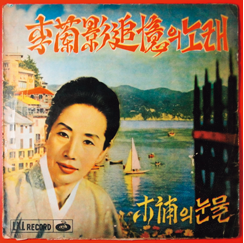
Lee Nan-yeong’s debut song “Tears of Mokpo” from 1935 struck a chord with Koreans, who were suffering under Japanese colonial rule. With this onesong, Lee became a star beloved by people all over the country. The photo shows the cover of the 1971 compilation album “Lee Nan-yeong Golden Hits.”
Mokpo is a harbor city at the southwestern end of the KoreanPeninsula with a population of 240,000. When Korea opened its portsto the world in 1897, it was Japan that quickly realized the importanceof this harbor. Mokpo was perfectly located for an approachto the Jeolla provinces, the granaryof Korea. So when Japanforcibly annexed Korea in 1910,Mokpo became a vital junction inthe country’s rail and road network.National Road No. 1, whichran south to north from Mokpoto Sinuiju, via Seoul, and NationalRoad No. 2, running west toeast from Mokpo to Busan, together with the railway lines, formedthe primary routes for transport of Korean commodities to Japan.Mokpo thus played a central role in the Japanese plunder of Koreaduring the colonial period (1910–1945). The poet Kim Seon-wulaments the historical wounds of Mokpo:Like the effigy that knows no pain With tens of needles stuck in its heart, Not able to shed a drop ofblood for relief Wading back and forth to Mokpo Harbor.
Rather than hurting, unable to love anyoneLove passionately and then be cast aside.
The last boat has departed and enters my body.
– From “Mokpo Harbor”
“Hurting, unable to love anyone” was Mokpo’s fate during thecolonial era. Songs of the human condition are inevitably born in thecompany of tragedy in life. Mokpo gave birth to songs and singersthat embodied the city’s soul. Born in Mokpo, the singer Lee Nanyeong(1916–1965) debuted in 1935 with the song “Tears of Mokpo.”It was a song that tore at the hearts of Koreans at the time for itsought to soothe their remorse and sorrow over losing the country.In this exquisite song, performed in a weepy, nasal tone to theaccompaniment of an accordion, people saw Korea’s sad fate andthe dance of history in the words of a heartbroken 19-year-old girl.“Tears of Mokpo” carries echoes of timeless stories of a nation’spain told in traditional pansori melodies.
As the song of the boatman flickers awayDeep into the waves of Samhak Island
The end of the new bride's sleeves is dappledWith tears of parting, the sorrow of Mokpo.
– From “Tears of Mokpo”
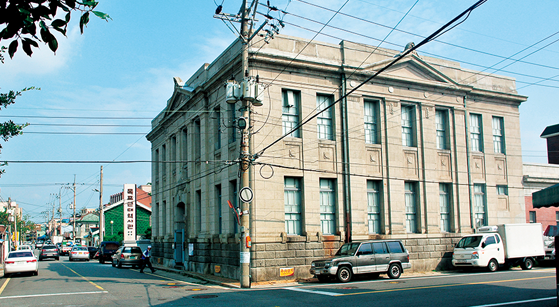
The Mokpo Modern History Museum is housed in the former Mokpo branch of the Oriental Colonization Company. The streets around this area are a testament to Mokpo's history as a port city that served as a key base for Japan’s exploitation of Korea during the colonial period.
“To love passionately and happily die for it.” Thiswas something that was non-existent for the peopleof a fallen country. The destination of life that couldn’tbe dreamed of. For the girl at the wharf, parting isunspeakably painful and sorrowful. When can we meetagain? Dreams of a new world are far away and hersleeves are wet with tears.
When the people of Mokpo talk about Lee Nan-yeongthey like to bring up the French chanteuse Edith Piaf(1915–1963). The two singers were contemporaries. Notonly did they debut at roughly the same time; they wereboth famous for inspiring and soothing the souls oftheir fellow countrymen. If Edith Piaf’s signature songsare “La Vie en Rose” and “Hymne a L’amour,” Lee Nanyeong’sare “Tears of Mokpo” and “Mokpo is a Harbor.”On the slopes of Mt. Yudal overlooking the city stands amonument to Lee.
Summer Night at Peace Plaza
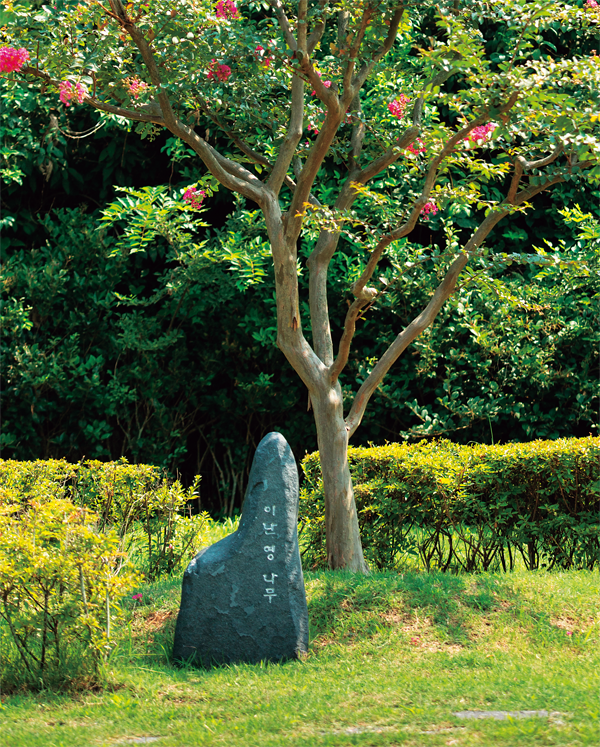
The singer Lee Nan-yeong's grave lies under a crape myrtle tree in the Lee Nan-yeong Park in Samhakdo.
All harbors are located where the land ends. And forsome people this means the harbor is the starting pointfor a new beginning. Here is a new dream for the city ofMokpo, once the core of bitterness and exploitation.
Kim Dae-jung (1924–2009). No Korean is ignorantof this name. Born to a family of sharecroppers on theisland of Hauido, off the coast of Mokpo, Kim was oneof the most politically oppressed figures in the world inthe past century: he was jailed six times, placed underhouse arrest 55 times, and spent 10 years in exile. Whenthe new military government ordered his execution in1980 but offered to spare his life if he promised to cooperate,Kim stated: “I too am afraid to die, but if I compromisenow to save my life I will die forever in history andthe hearts of the people. But even if I die now, I will liveforever in history and among the people.” This statement,so steadfast even in the face of death, is indeedentrenched deep in the hearts of the Korean people. In1997, Kim Dae-jung was elected the president of Korea,and then in 2000 he was awarded the Nobel Peace Prizefor his efforts to advance reconciliation between Southand North Korea. The life of Kim Dae-jung, his epicsuffering, and larger-than-life achievements can beexplored at the Nobel Peace Prize Memorial built on theformer island of Samhakdo, which had been reclaimedand is now part of the mainland.
The night is as fresh as could be at Peace Plaza inHadang. Children riding toy cars, young couples busyphotographing themselves, merchants selling varicoloredcandy floss, people lined up at snack carts, flowersellers, people just strolling around or relaxing on thebreakwater and chatting, people fishing as they listen tothe sound of the lapping waves: It seems as if the wholepopulation of Mokpo has descended on this square.
Myriad lights come on and music comes up.It’s thedancing fountain. In the middle of the harbor, great jetsof water rise and fall with the music. When lonelinesshits, try getting on a night train and getting off at MokpoStation to walk among the crowds at Peace Plaza. Thenoises infused with human warmth can be medicine forthe lonely soul.
As I strolled through the bustling square, I thoughtabout the times in which Lee Nan-yeong and Kim Daejunglived. The good times dreamt of by people whohad lost their country and roamed around with nohome were playing out in this plaza by the sea, withthe sound of the waves in the background. The peaceyearned for by the politician so dignified even in the faceof death was right there in front of my eyes. The scentof a human being, who rose above extremes of despair,loss of direction, and pain, and then battled on to realizehis dream. On that summer night in the harbor city ofMokpo, the stars blanketed the sky.
When loneliness hits, try getting on a night train and getting off at Mokpo Station to walk among the crowds at Peace Plaza. The noises infused with human warmth can be medicine for the lonely soul.
Gatbawi Culture Town
Gatbawi [Hat Rocks] Culture Town gives first-timevisitors to Mokpo a taste of the pleasure of travelingon foot. Clustered in this culture and arts complex aremuseums, memorial halls, and art galleries: MokpoNatural History Museum, Mokpo Ceramic LivingwareMuseum, National Research Institute of Maritime CulturalHeritage and National Maritime Museum, MokpoLiterature Hall, Namnong Memorial Hall, Mokpo Cultureand Arts Hall, and Mokpo Intangible Cultural HeritageCenter. Leisurely touring this complex over a few days, listening to the sound of the sea, you can feel your thoughtsgrow deeper with the city’s history.
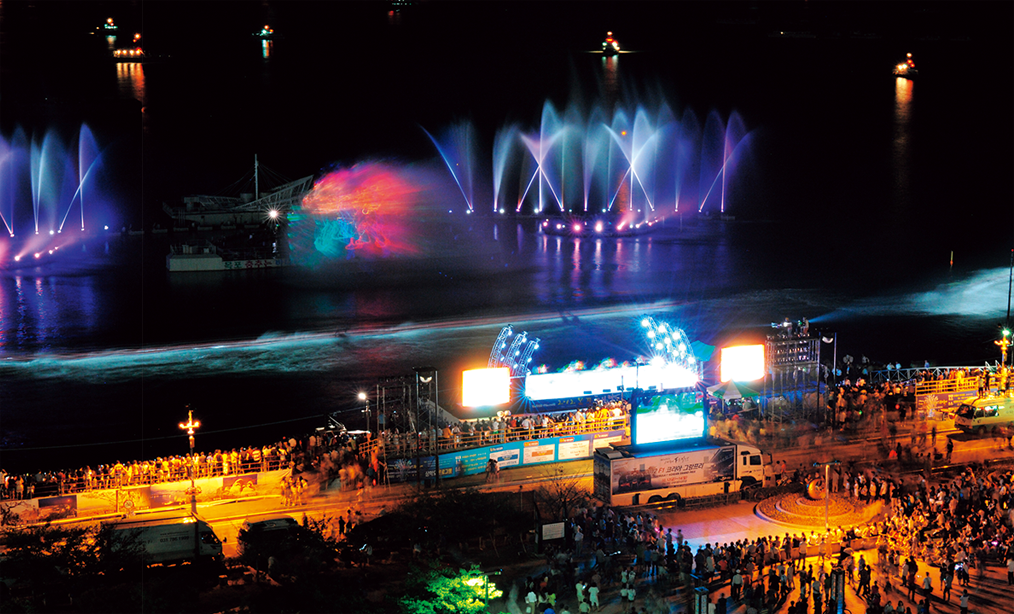
The Mokpo Harbor Festival has been held every summer since 2006 in Peace Plaza and the surrounding Samhakdo area.
Namnong Memorial Hall offers a well-organized exhibition of Korean literati paintings of the Southern School from the 19th century to the latter half of the 20th century. Heo Geon (1908–1987), known by his style name Namnong, was the grandson and successor of the style of Heo Ryeon (1808–1893), the lead figure of the Southern School who was lauded by famed calligrapher Kim Jeong-hui for having the “greatest dignity east of the Amnok [Yalu] River.” The museum displays the works of Namnong’s grandfather Heo Ryeon, his father Heo Hyeong, and his students. But among them all, my favorites are the works of Namnong’s brother Heo Rim(1917–1942), who passed away at the age of 25. Two of his paintings in the museum, “Old Man Selling Hens” (1940) and “Mountain Top” (1941), depict the lives of ordinary people during the colonial period and the mountains in warm tones and gentle lines. The distinction of an artist’s works is determined by the depth of his view of the world. There was a time when seeing these two paintings alone would make a trip to Mokpo worthwhile. To me they are the finest works from the transitional period in Korean painting, d with modern Western techniques and the spirit of the literati paintings of Joseon.
For those who like adventure and travel, the National Maritime Museum is not to be missed. There you can view the preserved remains of the Yuan Dynasty merchant ship (the Sinan shipwreck) that sank in 1323 in the seas of Sinan, off the coast of Mokpo, and relics recovered from the ship. In another gallery, the development of ships around the world can be explored. It is wonderful to follow the tracks of travelers from the Age of Exploration in the 15th century. The famed Chinese explorer Zheng He (1371–1433) led expeditions around the world with his fleet of 62 ships. On seven expeditions, between 1405 and 1433, he traveled to many countries in Asia, the Middle East, and Africa. His voyages continued even in his old age and eventually he died at sea, a fitting end for a legendary explorer. Every one of us holds in our hands the net of life. The explorer’s dream of adventure, to cast that net into uncharted waters, vast and mysterious, where no one has gone before, is a dream held dear in all ages.
Four Writers of Mokpo
Next stop is the Mokpo Literature Hall, past the Mokpo CeramicLivingware Museum. This harbor city has produced many writerswho are beloved by the Korean people. The Mokpo LiteratureHall showcases the lives and works of four of them: novelist ParkHwa-seong (1904–1988), playwrights Cha Beom-seok (1924–2006)and Kim U-jin (1897–1926), and French literature scholar and literarycritic Kim Hyeon (1942–1990). I lingered in the Kim Hyeon Galleryuntil closing time. Kim wrote 240 works during his lifetime, andthere is a reason why Koreans love the works of this man who wasneither a poet nor a novelist. He was a critic who passionately lovedthe works he wrote about. He approached them not as texts to beanalyzed but as the s of sublime love. Bringing the texts intohis vast reading collection, he delved into them to reveal the dreamstherein, and in doing so revealed his own integrity.
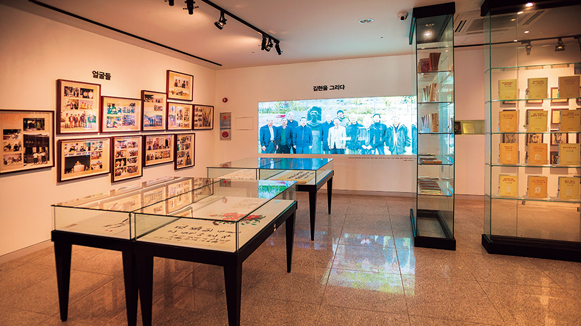
The Kim Hyeon Gallery at the Mokpo Literature Hall shows the manuscripts and relics left behind by Kim Hyeon (1942–1990), a literary critic who loved the written word.
“The further you move away from yourself, the closer you get. Itis this paradox that holds the secret of human existence.” – From“Kim Hyeon’s Artistic Travelogue” (1975)
“To read incorrectly means to read with a different principle inmind. But that is rather a way of reading that enables somethingnew to be d.” – From “Looking for the Hometown of Man”(1975)
“Does the rumor that good times are coming again really meangood times are indeed coming? Is it not a futile dream? I hesitate asI analyze and interpret the world.” – From “Analysis and Interpretation”(1988)
Sauntering through a place alive with history is the special giftof travel. There are times when life itself comes across as a muse.That’s what Mokpo means to me.
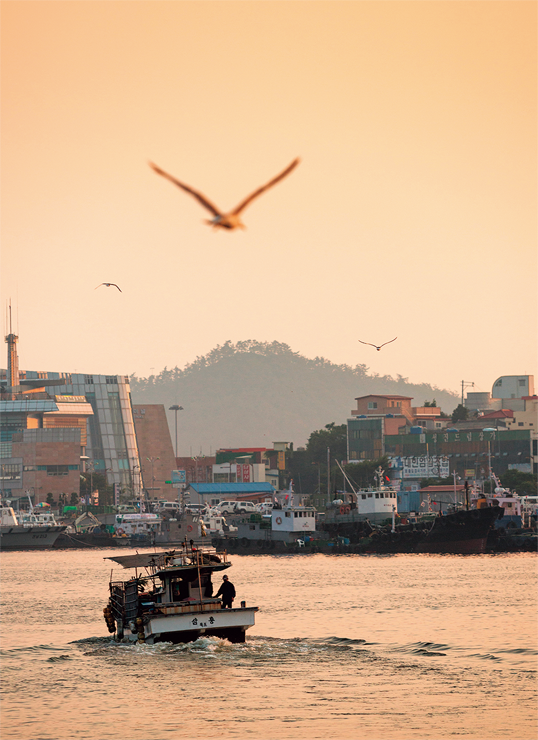
A harbor city, located at the end of the land, is for some people a point of departure tonew beginnings.